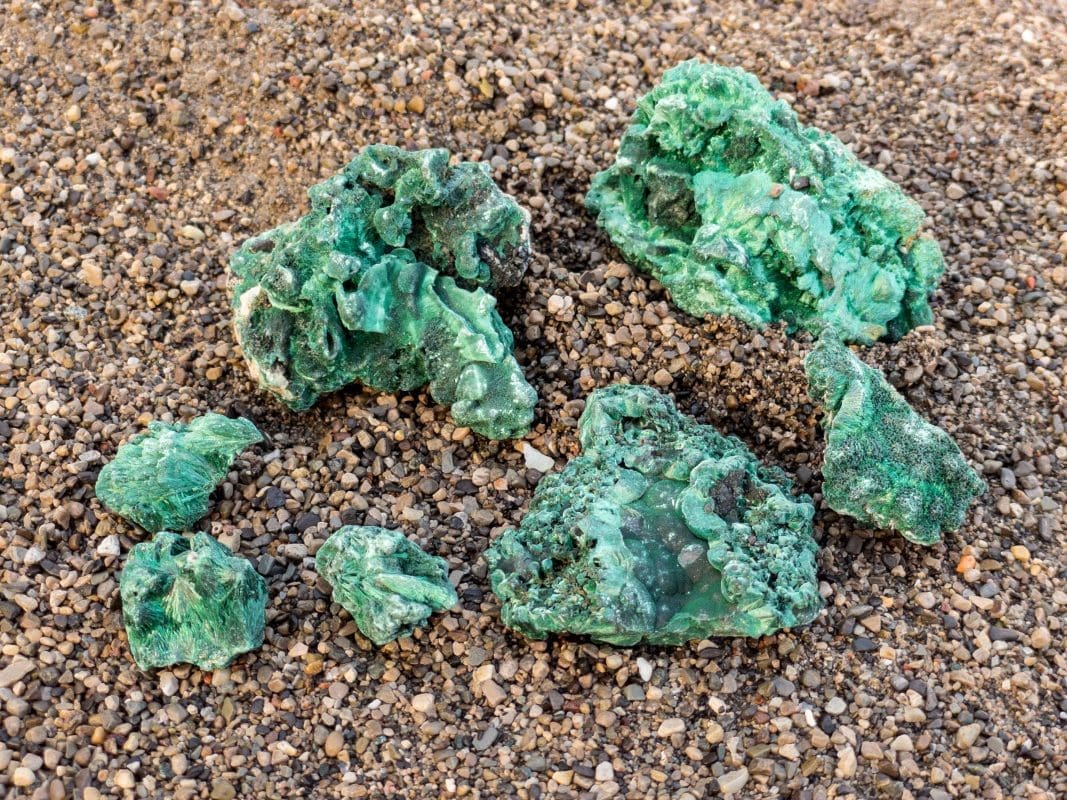Malachite Crystal: Meaning, Benefits, Properties, and Metaphysical Properties
Malachite is a stunning green mineral that has been highly valued for centuries for its unique color and intricate patterns. This crystal is believed to have powerful healing properties and is often used in various forms of spiritual and healing practices. In this article, we will explore the properties, benefits, and potential dangers of malachite crystal, as well as the different forms it can take, including raw malachite, azurite-malachite, chrysocolla-malachite, and the varying prices of this beautiful crystal.
Malachite Crystal Properties
Malachite crystal is a mineral that is known for its striking green color and unique banded or fibrous patterns. It is a secondary mineral that forms as a result of the alteration of other primary minerals and is commonly associated with copper deposits. Malachite is often found as a coating on other minerals or as veins within copper-bearing rocks. It is relatively soft, with a Mohs hardness of 3.5-4, it is not suitable for jewelry or other decorative items that may be subject to wear and tear, but it can be used for decorative purposes in sculptures, carvings, and other items that will be protected from damage.
Malachite Crystal Benefits
Malachite is believed to have powerful healing properties and is often used in various forms of spiritual and healing practices. It is said to have the ability to absorb negative energy and help clear and balance the chakras, especially the heart chakra, and promote emotional healing. It is also said to protect against electromagnetic pollution and radiation. Additionally, it is said to help with decision making, stimulate creativity and intuition, and improve memory and concentration. It is also said to help with physical issues such as headaches, asthma, and menstrual cramps.
Is Malachite Crystal Dangerous?
Malachite is considered a relatively safe crystal to use, however, it is important to note that raw malachite and azurite-malachite contain copper, which can be toxic if ingested or inhaled in large amounts. Therefore, it is recommended to handle these types of malachite with care and to wash your hands thoroughly after handling. Ingestion or inhaling of large amounts of copper may lead to symptoms such as nausea, vomiting, and fever. It is also important to note that Malachite is not recommended for people who are pregnant or breastfeeding, and it should not be used by children. It is always advisable to consult with professional before ingesting or inhaling any mineral.
Difference between Raw Malachite and Malachite Crystal?
Raw malachite is the natural form of the mineral, found in its natural state, often in the form of rough chunks or clusters. It can be highly variable in color and pattern, and may contain impurities or other minerals. On the other hand, Malachite Crystal refers to the polished, cut and shaped form of the mineral, which is often used for decorative and healing purposes. Malachite Crystal is usually more consistent in color and pattern, and has been shaped and polished to reveal its natural beauty. Additionally, Raw Malachite may contain copper and should be handled with care, while Malachite Crystal has been processed and cleaned to remove any impurities
Different types of Malachite: Azurite Malachite and Chrysocolla Malachite
Azurite-malachite is a combination of the minerals azurite and malachite. It forms when these two minerals are found together and can be found in shades of blue and green. Azurite is known for its deep blue color and is said to enhance intuition and spiritual insight, while malachite is known for its green color and is believed to have powerful healing properties. Together, azurite-malachite is considered to be a powerful combination for spiritual growth and emotional healing.
Chrysocolla-malachite is also a combination of two minerals, chrysocolla and malachite. It is typically found in shades of blue, green and blue-green color. Chrysocolla is known for its calming and soothing properties, and is said to help with communication and self-expression, while malachite is believed to have powerful healing properties. Together, chrysocolla-malachite is considered to be a powerful stone for communication, self-expression and the throat chakra.
Malachite Price
The retail cost per kilogram of malachite can vary widely depending on the quality and rarity of the specimen, as well as the location and the seller. Generally, the cost of raw malachite can be as low as $50 to $80 per kilogram, while polished or cut specimens can be priced significantly higher, ranging from $80 to $120 or more per kilogram. The cost for high-quality specimens with a deep and consistent green color, and well-defined patterns can be much higher, running in the hundreds or even thousands of dollars per kilogram. It’s worth noting that prices can fluctuate based on demand and availability, and it’s always best to check with multiple sellers to get a good idea of current market prices.
Malachite Pronunciation
The pronunciation of malachite is “ma-luh-kite”. It is important to note that the emphasis is on the first syllable “ma” and the second syllable “luh”. The final syllable “kite” is pronounced with a short “i” sound. The word is commonly mispronounced with emphasis on the last syllable, so it’s important to pay attention to the correct pronunciation when referring to this mineral.
In conclusion, malachite is a unique and beautiful crystal with powerful healing properties and a wide range of benefits. Whether you are interested in its spiritual properties, or simply looking for a stunning decorative piece, malachite is a great choice that is sure to enhance your life in many ways. It’s important to handle it with care, especially raw and azurite-malachite forms and to consult a professional before ingesting or inhaling it. And also to consider the variations of malachite, azurite-malachite, chrysocolla-malachite and decide which one is the best fit for you.

